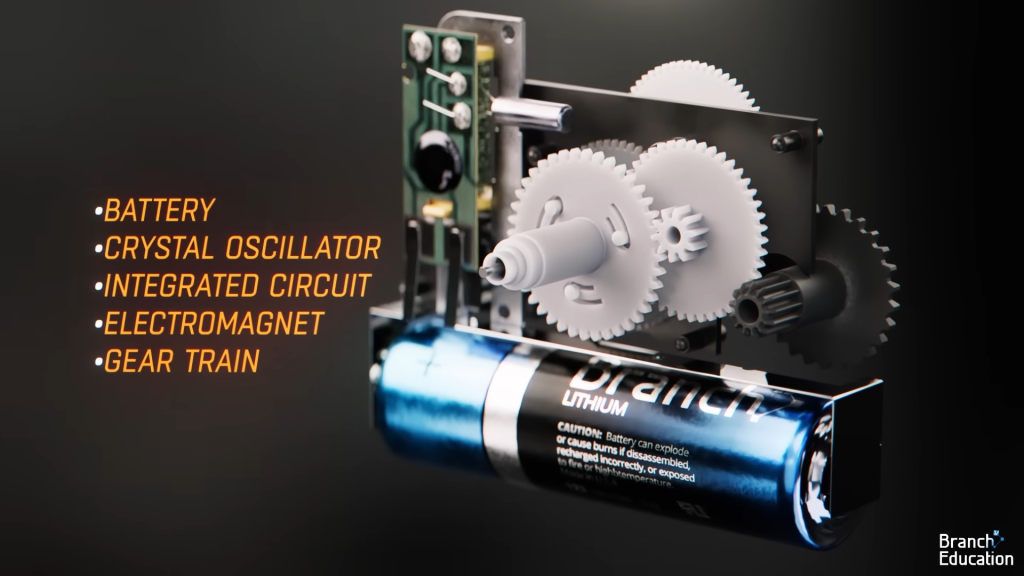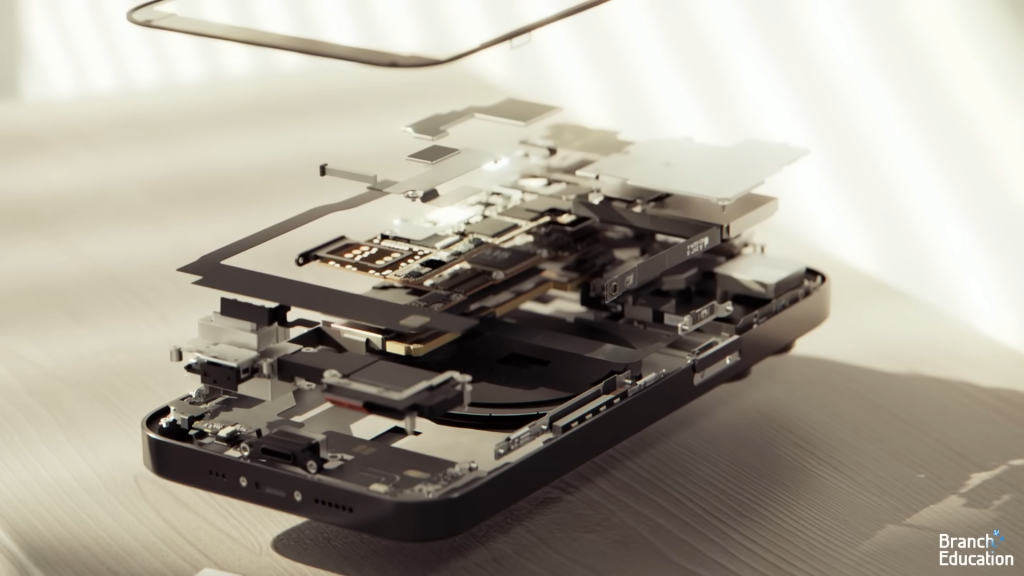Clocks have been an integral part of our lives for centuries, helping us keep track of time and stay organized. In today’s digital age, we encounter clocks everywhere, from our smartphones to wall clocks in our homes. But have you ever wondered how these clocks work? How do they accurately measure time and display it to us? In this article, we will dive into the fascinating world of digital and analog clocks, exploring the inner workings of these timekeeping devices.
Table of Contents
Digital and Analog Clocks
Let’s start by understanding the fundamental differences between digital clocks and analog clocks. Digital clocks use electronic circuits and numerical displays to represent time in a digital format, typically using a series of digits or segments. On the other hand, analog clocks utilize mechanical components and physical hands to display time on a circular dial.
Both types of clocks have their unique advantages and are suitable for different purposes. Digital clocks are known for their accuracy, ease of reading, and ability to display additional information such as dates and alarms. They are commonly found in electronic devices like smartphones, computers, and wristwatches. On the other hand, analog clocks are often appreciated for their classic and aesthetic appeal. They provide a visual representation of time and are commonly seen in wall clocks and traditional wristwatches.
The $10 Wall Clock
To understand the inner workings of a clock, let’s take a closer look at a simple $10 wall clock. While it may seem like a basic timekeeping device, it contains an intricate mechanism that ensures accurate timekeeping.
Gears in the Geartrain
Inside the wall clock, you will find a series of gears known as the geartrain. This gear system is responsible for transmitting power from the clock’s energy source to the clock’s hands, allowing them to move at the correct speed.
The geartrain consists of multiple gears with different numbers of teeth, each playing a crucial role in timekeeping. The first gear in the system, called the escape wheel, receives energy from a power source, typically a battery. As the escape wheel rotates, it engages with the next gear in the sequence, known as the center wheel. The center wheel, in turn, drives the motion of the minute hand.
Further down the geartrain, you will find additional gears responsible for driving the hour hand and other auxiliary features like date displays or chimes. The intricate arrangement and interaction of these gears ensure that the clock’s hands move at the appropriate speed to accurately represent the passage of time.
Crystal Oscillator and Piezoelectric Effect
Now, let’s explore the technology behind the accurate timekeeping of digital clocks. At the heart of a digital clock lies a component called a crystal oscillator. The crystal oscillator plays a crucial role in generating a stable and precise clock signal.
Resonance Frequency
The crystal oscillator utilizes the piezoelectric effect to generate a reliable clock signal. The piezoelectric effect refers to the ability of certain materials to generate an electric charge when subjected to mechanical stress. In the case of a crystal oscillator, a quartz crystal is used as the piezoelectric material.
Quartz crystals are naturally occurring piezoelectric materials known for their stability and accuracy. When a voltage is applied to a quartz crystal, it vibrates at a specific frequency known as the resonance frequency. The resonance frequency of a quartz crystal is determined by its physical dimensions and crystal structure.
The crystal oscillator circuit is designed to take advantage of the piezoelectric properties of the quartz crystal. It applies an electric field to the crystal, causing it to vibrate at its resonance frequency. This vibration generates a stable clock signal with a precise frequency, typically in the megahertz or gigahertz range.
Circuitry Inside a Wall Clock
In a digital clock, the clock signal generated by the crystal oscillator acts as a reference for the timekeeping circuitry. The clock signal is divided and processed using electronic components like counters and flip-flops to accurately represent time in a digital format.
The digital clock circuitry also includes additional features such as a real-time clock (RTC) chip, which keeps track of the current date and time even when the clock is powered off. The RTC chip ensures that the clock can maintain accurate time even after power interruptions.

Fast and Slow Clocks
It’s important to note that clocks, both analog and digital, can experience variations in their accuracy over time. Factors such as temperature changes, mechanical wear, and power supply fluctuations can affect the stability of a clock’s timekeeping mechanism.
To counteract these variations, clocks often incorporate a technique known as a phase-locked loop (PLL) or a frequency correction mechanism. This mechanism continuously monitors the clock’s accuracy and adjusts the clock signal to compensate for any deviations. This ensures that the clock remains as accurate as possible, even in the presence of external factors.
A Smartphone’s Gigahertz Clock Signal
While we have explored the inner workings of wall clocks, it’s worth mentioning that clocks are not limited to traditional timekeeping devices. In the world of smartphones and modern technology, clocks play a crucial role in the operation of these devices.
A smartphone’s clock signal, commonly referred to as the CPU clock or system clock, determines the speed at which the device’s processor operates. The clock signal is typically measured in gigahertz (GHz) and represents the number of clock cycles the processor can execute per second. The higher the clock frequency, the faster the processor can perform calculations and execute instructions.
Smartphone clock signals are generated using a combination of crystal oscillators, frequency dividers, and phase-locked loops. The crystal oscillator provides a stable reference frequency, which is then divided and multiplied to achieve the desired clock frequency. This complex circuitry ensures that the smartphone’s processor operates at the correct speed, enabling smooth performance and efficient operation.

Frequency Divider
A key component in generating clock signals for various electronic devices is the frequency divider. The frequency divider, as the name suggests, divides the frequency of an input signal to obtain a lower-frequency output signal. This is achieved by utilizing flip-flops or counters to divide the input signal by a specific factor.
Frequency dividers are essential in clock generation circuits as they allow for the creation of clock signals with different frequencies. By adjusting the division ratio of the frequency divider, engineers can tailor the clock signal to meet the specific requirements of a given application.
Conclusion
Clocks, whether digital or analog, play a vital role in our daily lives. From helping us stay punctual to coordinating our activities, clocks are essential timekeeping devices. Understanding the inner workings of clocks, including the geartrain mechanisms in analog clocks and the crystal oscillators in digital clocks, provides us with a deeper appreciation for the technology that keeps us on schedule.
Whether it’s the precise vibrations of a quartz crystal or the synchronized movements of gears, the intricate components and circuitry in clocks ensure that time is accurately measured and displayed. So the next time you glance at your smartphone or check the time on a wall clock, take a moment to appreciate the complex mechanisms and technologies that make it all possible.
Reference: Youtube.com/Branch_Education
Also Read: Clock Generation in Technology: A Deep Dive
FAQs
What is the difference between a digital clock and an analog clock?
Digital clocks use electronic circuits and numerical displays to represent time in a digital format, while analog clocks utilize mechanical components and physical hands to display time on a circular dial.
How does a crystal oscillator work?
A crystal oscillator utilizes the piezoelectric effect to generate a stable clock signal. A voltage applied to a quartz crystal causes it to vibrate at its resonance frequency, producing a precise and stable clock signal.
What is the purpose of a frequency divider in clock generation circuits?
A frequency divider is used to divide the frequency of an input signal to obtain a lower-frequency output signal. It allows engineers to tailor the clock signal to meet the specific requirements of a given application.
How do clocks maintain accuracy over time?
Clocks often incorporate a phase-locked loop (PLL) or a frequency correction mechanism to monitor and adjust the clock signal’s accuracy. This ensures that the clock remains as accurate as possible, even in the presence of external factors.
Can clocks experience variations in accuracy?
Yes, clocks can experience variations in accuracy due to factors such as temperature changes, mechanical wear, and power supply fluctuations. Frequency correction mechanisms help counteract these variations and maintain accurate timekeeping.
Are clock signals important in smartphones?
Yes, clock signals are crucial in smartphones as they determine the speed at which the device’s processor operates. Clock signals enable smooth performance and efficient operation of smartphone devices.
Where can I learn more about electronics and circuit design?
Brilliant offers a range of interactive courses and problem-solving exercises on various topics in electrical engineering, electronic engineering, and circuit design. It is a platform that can enhance your knowledge and understanding of these subjects.




